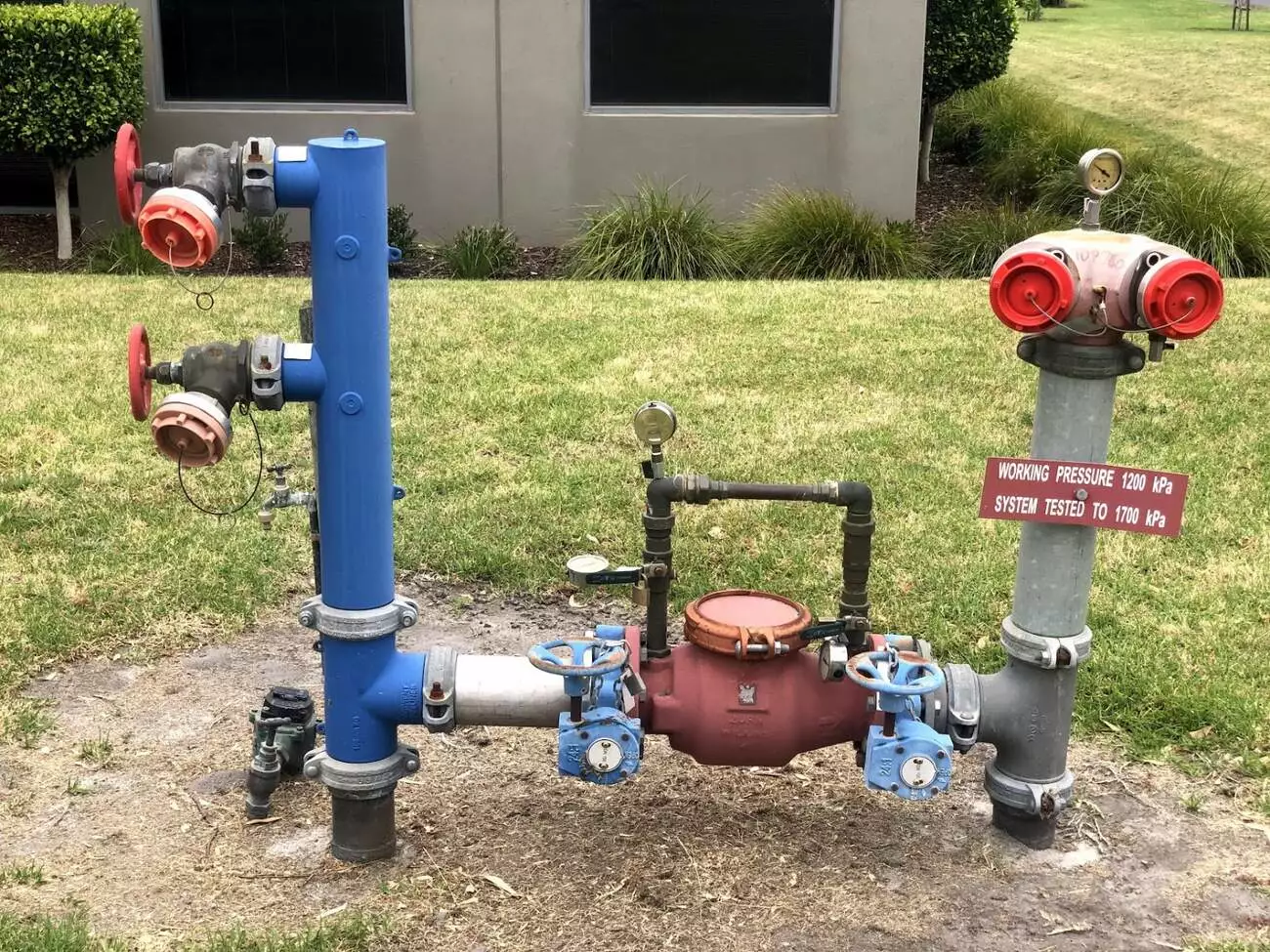In order to undertake a hydrostatic pressure test, a fire hydrant system may be fitted with a booster assembly and/or water supply pump(s) to augment the primary water supplyAS2419.1-2017, Clause 1.3.55 - Water Supply, Primary
A supply via a direct connection to a reticulated water supply or on-site tank, or a supply drawn from a river, reservoir, lake, dam, sea or stored rainwater with pumps as required and associated pipework, that provides points of connection for the attending fire brigade to access water and is capable of providing the minimum required firefighting flow rate and pressure for the required duration..
According to the Practice Note;
Clauses 1.4.17 and 10.2.2 of AS 2419.1-2005 confirmed that the hydrostatic test requirement does not apply to fire hydrant systems that do not incorporate fire brigade booster connections or on-site pump sets.
This is largely due to the determination that Clause 1.4.17 of the hydrant code references the term “working pressure”, which is defined within the hydrant design code as being:
“Working pressure – the maximum pressure achieved within the system by the fire authority, the system pumping equipment, or both, when the most hydraulically disadvantaged hydrant or hydrants are operated.”
Based on this definition, and the non-provision of fire brigade booster connections and pump sets at a building, the pressure within public (reticulated) water mains cannot be construed as working pressure, as the pressure available within the public water main is not achieved through the use of on-site fire brigade booster connections and pump sets.

